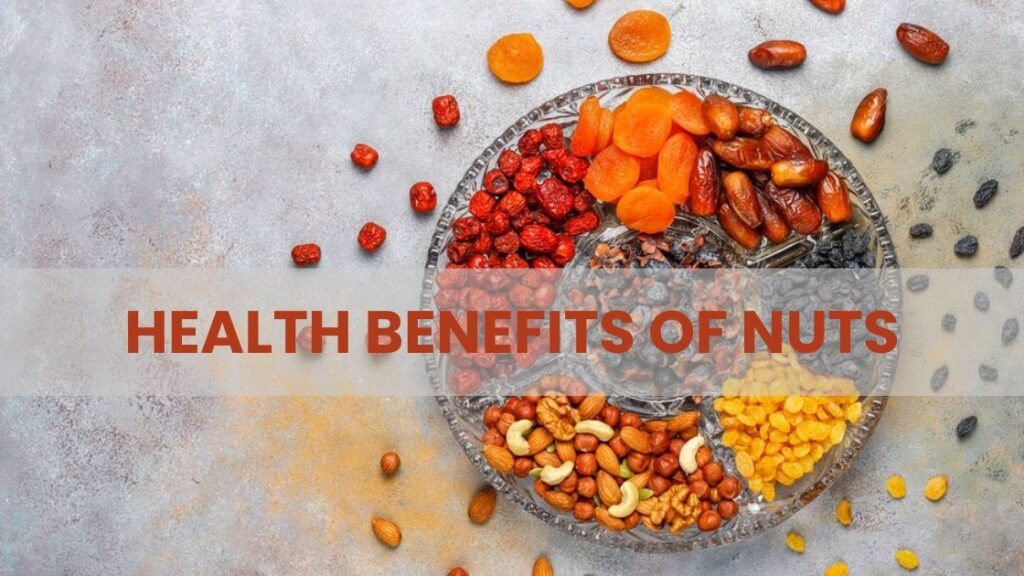What is superfoods? Benefits & Uses

Functional foods and superfoods have become popular terms in the nutrition world, reflecting a growing interest in exploring new food sources for health and wellness purposes. This trend has given rise to the concept of “future food,” where the focus is on finding innovative ways to optimize nutrition and well-being through High-Protein Vegetarian Foods & diet.
Understanding Functional Foods
Functional foods are a category of foods that offer health benefits beyond their basic nutritional value. These foods contain specific components that have been scientifically proven to promote health and prevent diseases. Understanding the key components and categories of functional foods can help you make informed choices about incorporating them into your diet.
Key Components of Functional Foods
Functional foods contain various components that contribute to their health benefits. Some of the key components found in functional foods include:
- Antioxidants: Antioxidants are compounds that help protect our cells from damage caused by free radicals, which are unstable molecules that can harm our bodies. Examples of functional foods rich in antioxidants include berries (such as blueberries, strawberries, and raspberries), dark chocolate, and green tea.
- Probiotics: Probiotics are live bacteria and yeasts that are good for our digestive system. They help maintain a healthy balance of bacteria in our gut, which is important for digestion and overall well-being. Foods like yogurt, kefir, sauerkraut, and kimchi are excellent sources of probiotics.
- Phytochemicals: Phytochemicals are natural compounds found in plants that have been shown to have various health benefits. Different phytochemicals provide different functions, such as reducing inflammation, boosting the immune system, or protecting against certain types of cancer. Examples of functional foods rich in phytochemicals include broccoli, spinach, tomatoes, and garlic.
Categories of Functional Foods
Functional foods can be categorized based on their primary health benefits. Here are some examples:
- Heart Health: Foods that promote heart health often contain components like omega-3 fatty acids, soluble fiber, and plant sterols/stanols. Some examples of functional foods for heart health include fatty fish (such as salmon), oats, almonds, flaxseeds, and olive oil.
- Brain Function: Certain foods can support brain health and cognitive function. These foods are often rich in antioxidants, omega-3 fatty acids, and vitamins and minerals like B vitamins, vitamin E, and magnesium. Blueberries, avocados, walnuts, turmeric, and dark chocolate are examples of functional foods for brain health.
- Gut Health: Foods that promote a healthy gut microbiota often contain probiotics, prebiotics, or both. Probiotics introduce beneficial bacteria into the gut, while prebiotics provide nourishment for these bacteria. Functional foods for gut health include yogurt, kefir, bananas, onions, and garlic.
- Bone Health: Calcium and vitamin D are essential for maintaining strong bones. Functional foods rich in these nutrients include dairy products (such as milk, cheese, and yogurt), leafy greens (like kale and spinach), fortified cereals or plant-based milks, and fatty fish.
By understanding the key components and categories of functional foods, you can make conscious choices to incorporate them into your diet to support your overall health and well-being.

Benefits Supported by Science
Functional foods play a crucial role in promoting health and preventing diseases due to their unique composition and beneficial effects on the body. Here’s a breakdown of the benefits supported by science:
1. Heart Health
Functional foods rich in omega-3 fatty acids, such as fatty fish or flaxseeds, have been extensively studied for their positive impact on heart health. These foods can help lower blood pressure, reduce triglycerides, and decrease the risk of cardiovascular events.
2. Brain Function
Certain functional foods, like blueberries and walnuts, are known for their cognitive benefits. They contain antioxidants and anti-inflammatory compounds that support brain health and may help improve memory and cognition.
3. Gut Microbiota
Probiotic-rich foods, including yogurt and kefir, have been associated with improved gut microbiota balance. They contribute to the growth of beneficial bacteria in the digestive system, promoting better digestion and overall gut health.
The scientific evidence supporting the health benefits of functional foods is robust and continues to grow. Numerous studies have demonstrated the positive effects of incorporating functional foods into one’s diet. For instance, a study published in the Journal of Nutrition found that regular consumption of nuts is linked to a reduced risk of heart disease.
It’s important to note that these findings are backed by reputable sources, providing a solid foundation for the inclusion of functional foods in a balanced diet. For example, research conducted at Harvard Medical School has shown that diets rich in fruits, vegetables, nuts, and whole grains can contribute to overall heart health.
By integrating functional foods into your daily meals, you can harness their nutritional power to support specific aspects of your well-being. Whether it’s enhancing cardiovascular function or nourishing your brain, these scientifically supported benefits make functional foods an essential component of a healthy lifestyle.
Incorporating Functional Foods into Your Diet
Functional foods are packed with beneficial nutrients and compounds that can improve your health and prevent diseases. To make the most of these foods, it’s important to incorporate them into your daily diet. Here are some practical tips to help you include more functional foods in your meals and snacks:
Know the key components
Familiarize yourself with the key components of functional foods, such as antioxidants, probiotics, and phytochemicals. These components provide specific health benefits and can be found in various foods.
Diversify your plate
Aim to include a variety of functional foods in each meal. This ensures that you’re getting a wide range of nutrients and compounds. For example, add berries (rich in antioxidants) to your breakfast cereal, include leafy greens (high in phytochemicals) in your salads, and incorporate fermented foods (packed with probiotics) like yogurt or kimchi into your meals.
Experiment with recipes
Look for recipes that incorporate functional foods as ingredients. For instance, try making a smoothie with spinach (phytochemicals), berries (antioxidants), and Greek yogurt (probiotics). Or create a colorful stir-fry using vegetables like broccoli (phytochemicals) and bell peppers (antioxidants).
Snack smart
Opt for functional food snacks instead of processed options. Grab a handful of nuts (rich in healthy fats), enjoy a piece of dark chocolate (packed with antioxidants), or have some carrots and hummus (providing fiber and phytochemicals).
Read labels
When shopping for packaged foods, read the labels carefully to identify functional food ingredients. Look for terms like “high in antioxidants” or “contains probiotics.” Incorporating these products into your diet can be an easy way to boost your intake of functional foods.
Remember, it’s all about balance and moderation. While functional foods offer great health benefits, they should be part of a well-rounded diet that includes other nutritious foods. By incorporating functional foods into your meals and snacks, you can nourish your body with the nutrients it needs to thrive.
The Power of Superfoods
Superfoods have become a popular term in the nutrition world, but what exactly defines a superfood? A superfood is a food that is highly nutritious and packed with beneficial compounds, such as antioxidants, vitamins, minerals, and phytochemicals. These foods offer exceptional health benefits and are often touted for their disease-fighting properties.
Nutrient Density and Unique Properties
One of the key criteria for determining whether a food is considered a superfood is its nutrient density. Nutrient density refers to the concentration of essential nutrients in relation to the number of calories in a food. Superfoods are known for their high levels of nutrients per serving, which means you’re getting a lot of nutritional bang for your buck.
In addition to nutrient density, superfoods also possess unique properties that set them apart from other foods. For example, certain superfoods like berries are rich in antioxidants, which help protect our cells from damage caused by free radicals. Others like fatty fish are high in omega-3 fatty acids, which have been shown to support heart health and brain function.
Examining Popular Superfoods
There are numerous superfoods that have gained popularity due to their impressive nutrient profiles and potential health benefits. Let’s take a closer look at some widely recognized superfoods:
- Blueberries: These tiny berries are packed with antioxidants called anthocyanins, which have been linked to improved brain function and reduced risk of chronic diseases like heart disease and cancer.
- Kale: This leafy green vegetable is incredibly nutrient-dense, providing an abundance of vitamins A, C, and K, as well as minerals like iron and calcium. It’s also rich in antioxidants and has anti-inflammatory properties.
- Quinoa: Known as a complete protein, quinoa contains all nine essential amino acids needed by the body. It’s also high in fiber, iron, magnesium, and B vitamins.
- Chia Seeds: These tiny seeds are a nutritional powerhouse, packed with omega-3 fatty acids, fiber, protein, and various minerals. They also absorb liquid and form a gel-like consistency, making them a popular ingredient in puddings and smoothies.
While these superfoods offer numerous health benefits, it’s important to note that they are not magical cure-alls. It’s the combination of their unique nutrient profiles and overall healthy diet that contributes to their potential positive effects on health.
Balanced Approach to Superfood Incorporation
Incorporating superfoods into your diet is a great way to boost your nutritional intake. However, it’s essential to take a balanced approach. Here are some guidelines to consider:
- Variety: Instead of relying heavily on one or two superfoods, aim for a diverse range of nutrient-dense foods. This ensures you’re getting a wide array of essential nutrients.
- Seasonal and Local: Opt for locally sourced and seasonal superfoods whenever possible. Not only does this support local farmers, but it also ensures freshness and maximum nutrient content.
- Incorporate into Meals: Add superfoods to your meals in creative ways. For example, sprinkle chia seeds on top of yogurt or oatmeal, blend kale into smoothies, or toss blueberries into salads.
- Mindful Portions: While superfoods are highly nutritious, they still contribute to your overall calorie intake. Be mindful of portion sizes and balance them with other healthy food choices.
By taking a balanced approach to incorporating superfoods into your diet, you can reap the benefits of these nutrient-packed foods while still maintaining overall nutritional balance.
Examining Popular Superfoods
Superfoods are a hot topic in the world of nutrition, often touted for their exceptional health benefits and disease-fighting properties. Let’s take a closer look at some of the widely recognized superfoods and explore the specific nutrients and potential benefits they offer.
1. Açaí Berries
These small, dark purple berries are packed with antioxidants, particularly anthocyanins, which contribute to their deep hue. Açaí berries have been associated with potential benefits for heart health and overall antioxidant support.
2. Kefir
This fermented dairy product is rich in probiotics, which are beneficial for gut health and digestion. It also provides essential nutrients such as calcium, protein, and B vitamins.
3. Garlic
Known for its distinct flavor and aroma, garlic contains allicin, a compound with potential immune-boosting properties. Additionally, garlic has been linked to cardiovascular health benefits.
4. Leafy Greens (e.g., Spinach and Kale)
These nutrient powerhouses are high in vitamins A, C, and K, as well as minerals like iron and calcium. They are also rich in phytochemicals such as lutein and zeaxanthin, which support eye health.
5. Berries (e.g., Blueberries and Strawberries)
Berries are known for their high levels of antioxidants, particularly vitamin C and flavonoids. They have been associated with cognitive function support and may offer benefits for skin health.
Dispelling Myths and Misconceptions
It’s important to address some common misconceptions surrounding superfoods. While these foods indeed offer impressive nutritional profiles, it’s essential to remember that there is no single “miracle” food that can provide all the necessary nutrients for optimal health. A balanced diet that incorporates a variety of nutrient-dense foods is key to overall well-being.
When it comes to weight loss or skin health, while superfoods can certainly be part of a healthy lifestyle, they are not a quick fix or a standalone solution. Sustainable weight management and glowing skin are best achieved through a combination of:
- A nutritious diet
- Regular physical activity
- Hydration
- Adequate sleep
- Proper skincare practices
By understanding the specific nutrients present in different superfoods and the potential benefits they offer, individuals can make informed choices when incorporating these foods into their diet while maintaining an overall balanced nutritional intake.
Balanced Approach to Superfood Incorporation
Superfoods, which are nutrient-dense foods that provide various health benefits, can be a valuable addition to your diet. However, it’s important to approach their incorporation in a balanced way to ensure you’re meeting all your nutritional needs. Here are some tips for incorporating superfoods into your meals while maintaining a balanced diet:
- Diversify Your Selection: Instead of relying heavily on just one or two superfoods, aim to incorporate a diverse range of options into your meals. This way, you’ll be able to benefit from a wider array of nutrients.
- Portion Control: While superfoods are packed with nutrients, it’s still important to consume them in moderation. Be mindful of portion sizes to avoid overdoing it and maintain a healthy balance of nutrients.
- Complement with Whole Foods: Don’t forget to include other nutritious foods alongside your superfoods. By combining them with whole foods like fruits, vegetables, whole grains, and lean proteins, you’ll create well-rounded meals that provide a variety of essential nutrients.
- Consider Meal Planning: Planning your meals in advance can help ensure that you’re incorporating superfoods into your diet regularly. Try to include different types of superfoods in each meal to maximize the nutritional benefits.
“Meal planning is an effective way to make sure you’re getting a good mix of nutrients from various sources.”
By following these strategies, you can enjoy the benefits of superfoods while still maintaining a balanced and nourishing diet.
Functional Foods vs Superfoods: Debunking the Dilemma
When it comes to the world of nutrition, two terms that often come up are functional foods and superfoods. These terms are used to describe certain foods that offer health benefits beyond their nutritional value. While there is some overlap between the two, they have distinct definitions and scopes that are worth exploring.
Differences in Definition and Scope
Functional foods are defined as foods that provide essential nutrients and contain unique protective compounds that contribute to overall health. They are specifically formulated or modified to provide additional health benefits beyond basic nutrition. Examples of functional foods include oat bran fiber, soy protein, fish oil fatty acids, probiotics, prebiotics, plant sterols, and stanols.
On the other hand, superfoods are foods that are considered to be nutrient-dense and contain high levels of antioxidants and other beneficial nutrients such as vitamins and minerals. They are often marketed for their disease-preventing abilities and potential health benefits. Some examples of superfoods include açaí berries, kefir, garlic, kale, blueberries, and a variety of fruits and vegetables.
While functional foods focus on providing specific health benefits through targeted nutrients or compounds, superfoods emphasize overall nutrient density and unique phytochemical profiles. The key distinction lies in the primary objective of these food categories – functional foods aim to address specific health concerns or conditions, while superfoods prioritize overall nutritional excellence.
The Common Ground of Nutritional Excellence
Despite their categorization differences, both functional foods and superfoods share a foundation of nutritional excellence. They both offer an array of essential nutrients, bioactive compounds, and antioxidants that contribute to overall health and wellness. Here are some common aspects between functional foods and superfoods:
- Nutrient Density: Both functional foods and superfoods are packed with essential vitamins, minerals, fiber, healthy fats, and other beneficial compounds. These nutrients play a crucial role in supporting various bodily functions and maintaining overall health.
- Antioxidant Content: Both functional foods and superfoods are rich in antioxidants, which are compounds that help protect against oxidative stress and inflammation in the body. Antioxidants have been linked to a range of health benefits, including reduced risk of chronic diseases.
- Phytochemicals: Functional foods and superfoods often contain unique phytochemicals – naturally occurring compounds found in plants – that have been shown to have numerous health benefits. These phytochemicals contribute to the vibrant colors, flavors, and aromas of these foods.
- Health-promoting Effects: Both functional foods and superfoods have been extensively studied for their potential positive effects on various aspects of health, such as heart health, brain function, immune support, and gut health.
Making Informed Choices: When to Prioritize Functionality or Supercharged Nutrition
With the understanding that functional foods and superfoods offer different but complementary benefits, it’s important to make informed choices based on individual health needs and goals. Here are some practical considerations to keep in mind:
- Specific Health Concerns: If you have specific health concerns or conditions, opting for functional foods that target those areas may be beneficial. For example, if you want to support heart health, incorporating functional foods like oats or fatty fish rich in omega-3 fatty acids would be a wise choice.
- Overall Nutritional Balance: While incorporating superfoods into your diet can provide a nutrient boost, it’s essential to maintain overall nutritional balance. Remember that no single food can provide all the necessary nutrients for optimal health. Focus on consuming a variety of whole foods from different food groups to ensure a well-rounded diet.
- Personal Preferences and Enjoyment: Consider your personal preferences and enjoyment when choosing between functional foods and superfoods. It’s important to select foods that you enjoy eating and can incorporate into your daily routine without feeling restricted or overwhelmed.
By understanding the distinctions between functional foods and superfoods, you can make informed choices that align with your health goals. Remember, a balanced approach that combines both functional foods and superfoods can provide a solid foundation for a healthy and nourishing diet.
The Common Ground of Nutritional Excellence
Functional foods and superfoods may be categorized differently, but they both share a fundamental attribute: nutritional excellence. Despite their distinct labels and marketing hype, these two types of foods contribute to a balanced and wholesome diet due to their exceptional nutrient profiles and potential health benefits. Here are the key points to consider when exploring the common ground of nutritional excellence:
Nutrient Density
Both functional foods and superfoods are known for their high nutrient density, meaning they provide substantial amounts of essential vitamins, minerals, antioxidants, and other beneficial compounds relative to their calorie content. This characteristic makes them valuable additions to any diet striving for optimal nutrition.
Health-Promoting Properties
Functional foods and superfoods often contain specific compounds that have been linked to various health benefits. For instance, certain functional foods rich in omega-3 fatty acids are associated with improved heart health, while superfoods like blueberries are praised for their cognitive-boosting antioxidants. Their shared goal is to promote overall well-being through the consumption of bioactive components.
Dietary Diversity
Emphasizing a variety of functional foods and superfoods in your diet can enhance the overall nutrient intake and contribute to a more diverse array of beneficial bioactive compounds. This dietary diversity supports optimal health by ensuring that you obtain a wide range of essential nutrients and phytochemicals.
By recognizing the shared commitment to nutritional excellence between functional foods and superfoods, individuals can appreciate the value of incorporating both categories into their diets. It’s important to view them not as competing choices but as complementary components that collectively contribute to a nourishing and healthful eating pattern. This perspective encourages a holistic approach to nutrition, embracing the unique benefits offered by different types of foods without fixating on rigid categorizations or marketing buzzwords.
Remember, the key to reaping the benefits of both functional foods and superfoods lies in balance and moderation. Rather than focusing exclusively on specific items labeled as superfoods or functional foods, prioritize diversity in your food choices to harness the collective power of various nutrient-dense options available from both categories.
In summary, while functional foods and superfoods may be depicted differently in popular discourse, their underlying mission remains rooted in promoting health through exceptional nutrition. By embracing this shared foundation of nutritional excellence, individuals can navigate the landscape of food choices with confidence, knowing that they have access to an abundance of options capable of enhancing their well-being.
Making Informed Choices: When to Prioritize Functionality or Supercharged Nutrition
When it comes to making informed choices about your diet, considering whether to prioritize functionality or supercharged nutrition is essential. Here are some practical considerations for selecting the most appropriate foods based on individual health needs and goals:
Assess Your Nutritional Needs
Consider your specific health requirements and nutritional deficiencies when choosing between functional foods and superfoods. For example, if you need to improve your heart health, you might prioritize functional foods rich in omega-3 fatty acids, such as fatty fish, over trendy superfoods.
Focus on Variety
Instead of fixating on a single superfood, aim for a diverse range of functional foods and superfoods to ensure a balanced nutrient intake. Incorporate a mix of colorful fruits, vegetables, whole grains, lean proteins, and healthy fats into your meals.
Consider Affordability and Accessibility
While superfoods may offer exceptional nutritional value, they can sometimes be expensive or challenging to find. In contrast, many functional foods are readily available and more budget-friendly. Take into account the practicality of including these items in your regular diet.
Consult with a Healthcare Professional
If you have specific health concerns or dietary restrictions, seek guidance from a healthcare professional or registered dietitian. They can provide personalized recommendations based on your individual circumstances.
By carefully evaluating the unique properties of both functional foods and superfoods, you can make informed choices that align with your well-being goals.
Embracing the Future of Nutraceuticals
In a world where food trends and innovations are constantly evolving, the concept of future food has gained significant attention. As we strive to meet the nutritional needs of a growing global population, it is essential to explore sustainable cultivation practices and alternative food sources. Let’s delve into the importance of embracing the future of nutraceuticals through sustainable cultivation and food security.
Sustainable Cultivation and Food Security
Sustainable agricultural practices play a crucial role in ensuring a steady supply of functional foods and superfoods while minimizing negative environmental impacts. Here are some key points to consider:
1. Regenerative Agriculture: This approach focuses on restoring and enhancing ecosystems by adopting practices such as cover cropping, crop rotation, and minimal tillage. Regenerative agriculture not only improves soil health but also reduces greenhouse gas emissions and enhances biodiversity.
2. Vertical Farming: With limited arable land available, vertical farming has emerged as an innovative solution. This method involves cultivating crops in vertically stacked layers, often in urban environments or controlled environments like greenhouses. Vertical farming allows for year-round production, reduced water usage, and minimal pesticide use.
3. Aquaponics: Combining aquaculture (fish farming) with hydroponics (soil-less plant cultivation), aquaponics creates a symbiotic relationship between fish and plants. The fish waste provides nutrients for the plants, while the plants filter the water for the fish. This closed-loop system minimizes water usage and creates a sustainable source of both protein and fresh produce.
4. Insect Farming: Insects are rich in protein, vitamins, minerals, and healthy fats. Insect farming offers a sustainable alternative to traditional livestock farming due to its lower environmental impact. Insects can be used as an ingredient in functional foods or consumed directly for their nutritional benefits.
5. Algae Cultivation: Algae are highly sustainable and can be cultivated in various environments, including freshwater, saltwater, or wastewater. They are rich in essential nutrients such as omega-3 fatty acids, vitamins, minerals, and antioxidants. Algae-based functional foods and superfoods have the potential to address nutritional deficiencies while minimizing resource consumption.
Shaping the Food Environment for Better Public Health
In addition to sustainable cultivation practices, it is crucial to shape the food environment to improve public health. By implementing policy interventions and increasing accessibility and affordability of functional foods and superfoods, we can promote their consumption on a larger scale. Here are some key considerations:
1. Education and Awareness: Providing accurate information about the benefits of functional foods and superfoods is essential for consumer understanding. Educating individuals about the role these foods play in maintaining good health can empower them to make informed dietary choices.
2. Food Labeling: Clear and transparent labeling can help consumers identify functional foods and superfoods easily. Including relevant health claims backed by scientific evidence can guide individuals towards making healthier choices.
3. Incentives for Farmers: Encouraging farmers to adopt sustainable cultivation practices through financial incentives or subsidies can promote the production of functional foods and superfoods. This support can contribute to increased availability and affordability for consumers.
4. Partnerships with Food Industry: Collaborating with the food industry can facilitate the development of innovative functional food products that cater to different tastes and preferences. This partnership can also drive research and development efforts to explore new food sources with exceptional nutritional profiles.
5. Food Assistance Programs: Including functional foods and superfoods in food assistance programs ensures that vulnerable populations have access to these nutritious options. It helps address food insecurity while promoting better health outcomes.
By embracing sustainable cultivation practices, shaping the food environment, and prioritizing future food trends and innovations, we can meet future global nutritional needs effectively. The integration of functional foods and superfoods into our diets not only benefits individual health but also contributes to a more sustainable and resilient food system.
Shaping the Food Environment for Better Public Health
The future of food is evolving, with emerging trends in the development of advanced functional foods and superfoods. These innovative approaches, such as personalized nutrition and 3D-printed supplements, aim to enhance the bioavailability and effectiveness of functional components in specialized food products. As we look ahead to the future of food production and consumption, it’s essential to consider the role of policymakers in promoting these future foods.
Examining Policy Interventions
Policy interventions play a crucial role in shaping the food environment and driving the accessibility and affordability of functional foods and superfoods for all individuals. By examining potential policy impacts, we can assess how these interventions may influence public health outcomes.
Future Food Trends
As we explore future food trends, it’s important to consider how policymakers can support the development and accessibility of functional foods and superfoods. This includes initiatives aimed at promoting sustainable agricultural practices that contribute to the production of these nutritious food options.
Future Food Production
Policy interventions can also influence future food production methods, encouraging innovation in farming techniques, food processing, and distribution systems. By fostering a supportive regulatory environment, policymakers can incentivize the production of functional foods and superfoods that meet high nutritional standards.
Role of Policymakers
Policymakers have an opportunity to collaborate with food industry stakeholders to establish guidelines for the development and marketing of future foods. This collaboration can ensure that accurate information about functional foods and superfoods is communicated to consumers, promoting informed dietary choices.
Enhancing Accessibility and Affordability
Through strategic policies, governments can work towards enhancing the accessibility and affordability of functional foods and superfoods for all segments of society. This may involve initiatives such as nutritional assistance programs or subsidies that make these products more accessible to underserved populations.
In conclusion, policy interventions have the potential to shape a food environment that supports better public health through the promotion of functional foods and superfoods. By embracing innovative approaches and collaborating with industry experts, policymakers can pave the way for a future where nutritious food options are widely available and contribute to improved overall well-being.
Conclusion
Incorporating both functional foods and superfoods into your diet can be a delicious way to support your health goals. By doing so, you can enjoy their delicious flavors while reaping the benefits of these nutrient-dense foods.
Here are some key takeaways:
- Superfoods are foods that contain high levels of antioxidants and other nutrients for minimal calories. Examples include açaí berries, kefir, garlic, and various fruits and vegetables.
- Functional foods offer health benefits beyond their nutritional value. They provide essential nutrients and often contain unique protective compounds that contribute to overall health. Examples include oat bran fiber, soy protein, fish oil fatty acids, probiotics, prebiotics, plant sterols, and stanols.
Remember to be mindful of their unique properties and roles in a balanced diet. So go ahead, embrace the power of superfoods and enjoy the benefits they have to offer!








